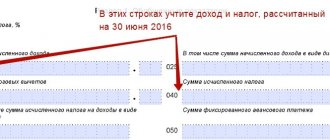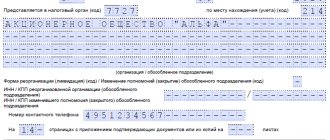Calculated and withheld tax: definitions, differences
The calculated deduction is the calculated amount. This is when the employer, before paying the employee's salary, deducts tax from it, which is subsequently withheld from the total income and sent to the state treasury. Simply put, the countable type is levied on the salary of an employee of a structure or an individual entrepreneur. Withholding tax is the amount that a boss withheld from a subordinate's income as a tax agent. Today the two concepts are not very different. The tax is calculated when the monthly salary is received, and the deduction occurs when the employee has already received the salary. However, this does not mean that the amounts of both taxes are always the same.
Before withholding personal income tax, a tax base is created separately for each employee. Based on the amount received, the amount of tax that is subject to withholding is calculated. After the calculations, the company’s accounting department performs salary and personal income tax transfers.
What are the characteristics of the tax calculated and withheld in personal income tax?
It turns out that the calculated tax is calculated using the following formula:
Withheld personal income tax is the amount of tax that is necessarily withheld from the salaries and other income of employees. What is important here is that the very fact of deduction is made on the basis of the amounts of income that were actually received. It turns out that the employer undertakes, when making income payments to employees, to send the amount of taxes by payment order to the state budget.
If the employee receives income in the form of material benefits, as well as in kind, personal income tax cannot be withheld. However, it must still be calculated from other types of financial orders.
Income tax withholding
In 2021, some changes were made to tax legislation regarding transfers of funds to the state treasury. However, the calculations and deductions have not changed. The amendments affected exclusively the terms of accrual to the budget. Thus, payments occur no later than the next day after the payment of wages. Weekends and holidays are taken into account. The deadline, including vacation pay, is no later than the last day of the month. As a rule, state-owned companies pay wages twice a month:
- advance – for the first half worked;
- the final payment is for the second half worked.
That is why many are interested in: is the fee withheld from the advance payment? The tax authority is not supposed to collect money from employees' advance payments.
Only full income is taxed.
Peculiarities
It happens that a company employee has the right to tax deductions. In this case, the accounting department should withhold taxes not from the entire salary, but taking into account these deductions. So, if a person has two children, then the tax deduction will be 1,400 rubles. In addition, tax deductions can be taken for the purchase of real estate or education. There is also a deduction of 500 rubles for disabled children and 3,000 rubles for participants in the accident at the Chernobyl nuclear power plant. The employee must prove his right to these and other deductions himself; for this, he submits the relevant documents to his HR department.
Salaries may be paid once or twice a month, but tax deductions are made only once a month. Therefore, there are no fees for advance payments, they are only for basic salary. There is always a difference between the money that was credited to the employee and the money that he received in his hands. But there is a certain limitation: all additional deductions should not exceed 20%.
When tax is not withheld
Many people think that tax is withheld in all cases. But that's not true. It happens that it is simply impossible to keep it. Here, for example, is a situation: a store is giving away prizes in the form of its products. Let's say a mobile phone is being raffled off. Since no one pays any money in this case, there is no tax withholding. By law, the store is obliged to inform not only the winner, but also the Federal Tax Service. This must be done no later than the first day of the first spring month that follows the prize drawing.
Situations in which tax is not withheld
In some cases, it is not possible to withhold tax. For example, when a store organizes a drawing for prizes, which include its own products. It could be a smartphone. In this case, no money is paid to anyone, so no tax can be collected. In accordance with current legislation, the trading platform is obliged to report the winnings to both the winner and the Federal Tax Service. This should be done before the first month of spring, which follows after the drawing.
Is there a penalty for not transferring
Everyone knows that fees must be paid. They are mandatory for everyone except categories of citizens who have benefits. As for non-transfer or non-withholding of tax, there are penalties for this. It is impossible for a private entrepreneur or company not to collect taxes or to collect them but not pay them to the budget. It is also not allowed for an entrepreneur not to pay fees. For such actions he may be subject to administrative liability. The amount of the fine will depend on the amount of tax not withheld and not transferred. As a rule, the amount is 20% of the amount.
Sanctions for non-withholding and non-transfer
In accordance with Article 123 of the Tax Code of the Russian Federation, if an organization or individual entrepreneur is obliged and has the opportunity to withhold and transfer tax revenue to the budget, but due to certain circumstances this procedure is not completed, the tax agent must pay the established amount of collection. The amount of sanctions depends on the amount not transferred. The fine is 20% of it.
Attention: For non-payment of personal income tax, you must have objective reasons that can be taken into account by the Federal Tax Service.
What income is taxed on?
You need to know that wages are all subject to tax. The only thing is that there are types of cash receipts that are not taxable:
- scholarships;
- social benefits;
- pensions and disability pensions;
- maternity leave;
- unemployment benefits;
- alimony;
- various compensations.
During vacation, the fee is calculated based on the average salary. The maximum amount is calculated when an employee falls into several categories at once. The minimum salary tax is 13%. The employee receives a salary with personal income tax deducted. If he has loan debts, alimony and other deductions, then they are also collected, and the employee receives wages taking into account these deductions.
Types of deductions from wages
The current regulatory framework provides for the following types:
1. Mandatory deductions from wages are types of investigations from the wages of Russian citizens, which are carried out on the basis of legislative norms. For example, personal income tax, which must be withheld from almost all types of income and receipts in favor of individuals.
Mandatory deductions include not only personal income tax, but also deductions from wages based on a writ of execution: alimony, deductions from the earnings of convicted citizens. The key difference from other types is the presence of a legislative or administrative document on the basis of which deductions are made from debtors. An administrative document means a court decision, enforcement proceedings, a writ of execution, etc.
2. Optional - this is a type of deduction from earnings that is made by order of the employer, by agreement between the employer and the employee.
By decision of the employer, amounts excessively transferred to citizens, for example, as a result of a counting error, may be withheld from the income of subordinates. Also, money may be withheld from workers’ earnings in the following cases:
- by order of the body for resolving individual labor disputes, if the employee’s guilt in causing damage, failure to perform duties, or downtime has been established;
- a court ruling established that the employee’s wages were paid in excess due to his failure to fulfill his official duties;
- by decision of the employer, the unearned advance payment transferred towards future wages is withheld;
- by order of the employer, unspent and (or) unconfirmed advances for travel expenses, accountable amounts, and similar payments are withheld;
- compensation to the employer for material damage by financially responsible persons, etc.
There are many reasons for unnecessary wage garnishments. Let's look at some situations in more detail.
3. Voluntary - any type of deduction from earnings made at the employee’s own request, be it the transfer of additional insurance contributions to the funded part of a labor pension, trade union dues or amounts of voluntary donations.
The main difference from other types is the presence of a statement from the employee, which indicates the conditions, amounts and purposes of the withheld amounts. An approximate sample can be downloaded at the end of the article.
4. Special or individual - this is a separate type of penalties that are provided for by local regulations of employers. For example, a company has introduced a penalty for being late. Please note that such penalties are not provided for in current legislation. Officials consider such deductions illegal. However, some employers continue to introduce a system of fines into the wage system.
Main clarifications
Tax calculations should be carried out without taking into account the income that the taxpayer receives from other agents, as well as those funds that were withheld by third-party agents. They, in turn, must withhold the accrued tax when paying salaries of payers.
The deduction must be made by the employer himself. The amount withheld does not exceed 50% of all income.
If withholding is impossible, the agent must, within a month from the end of the tax period in which limiting circumstances may have arisen, inform the payer and the Federal Tax Service in writing about this fact. In this case, the tax amount must be reflected.
The tax calculated and withheld in personal income tax can be different in many cases. For example, if an employee had a rolling vacation from December to January.
In this case, part of the vacation in December will be included in the calculated personal income tax, but the entire tax will be included in the withholding tax. In addition, if the amount of calculated tax exceeds 50% of income, the withheld tax will also differ from the calculated one - it will be less.
Federal Tax Service employees assure that differences in the amounts of withheld and calculated taxes can only arise if the calculations were previously made incorrectly. For this reason, if the 2-NDFL certificate reflects differences, then it is necessary for the employer to provide an explanatory receipt to the Federal Tax Service, which will confirm the accuracy of the calculations.
When drawing up an explanatory note, the accountant has the opportunity to once again check the accuracy of his calculations and identify inaccuracies in the report. If an error is identified, you must also provide the Federal Tax Service with a copy of the payment order, which should reflect the amount of tax that was erroneously not transferred.
If the tax is not paid within the allotted period or is not done at all, the employer will be forced to pay a fine of 20% of the total deduction.
Employer-initiated deductions
Occurs in case of damage or loss of property (Debit Credit 73.2), debt on accountable amounts (Debit Credit 71). The employer can also deduct part of the funds from the employee’s salary to repay a previously issued loan (Debit Credit 73.1).
Sometimes an employer may mistakenly pay a larger salary. Then part of the overpayment is withheld from the employee.
Another situation: an employee took full paid leave, but quit before the end of the period for which it was taken. Amounts of vacation pay for those days to which the employee is not entitled are withheld (Debit Credit 73).
Example:
The employee has funds withheld from his salary (RUB 000) to repay a loan in the amount of RUB 5,500.
Postings:
| Account Dt | Kt account | Wiring Description | Transaction amount | A document base |
| Employee salary accrued | 000 | Payroll statement | ||
| 68 personal income tax | Personal income tax withheld | 3640 | Payroll statement | |
| 73.1 | Loan amount withheld | 5500 | Loan agreement Accounting certificate |







